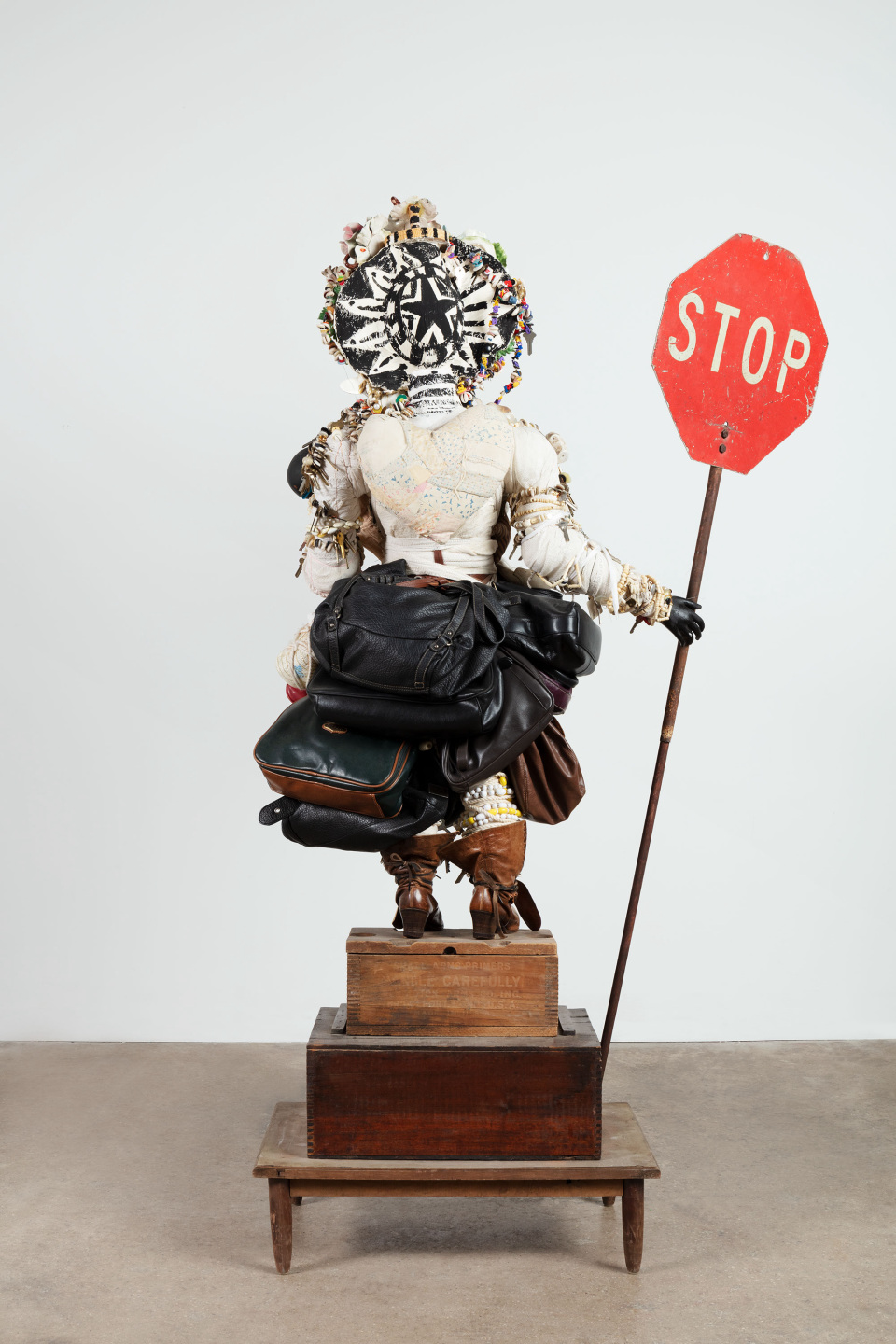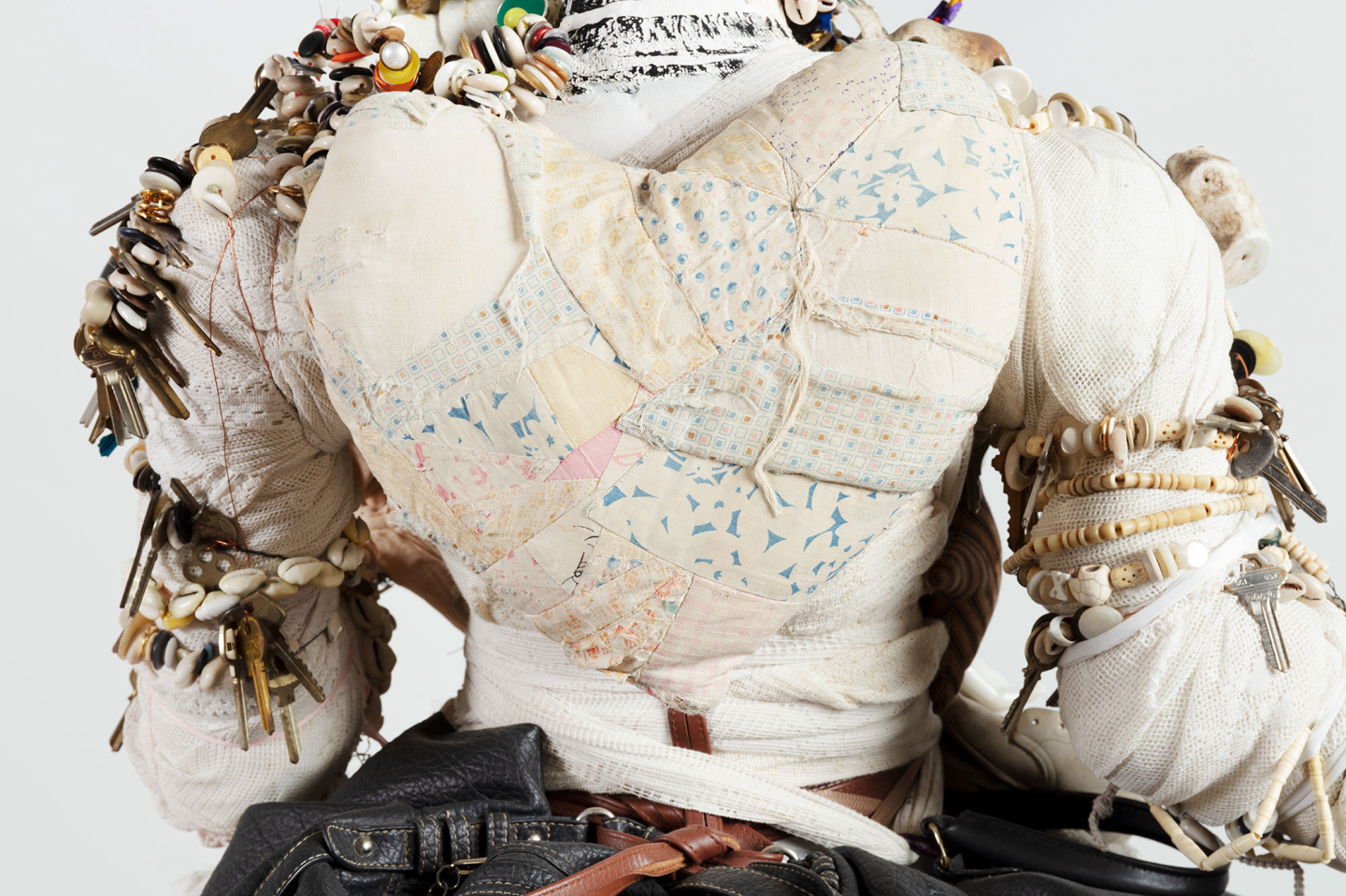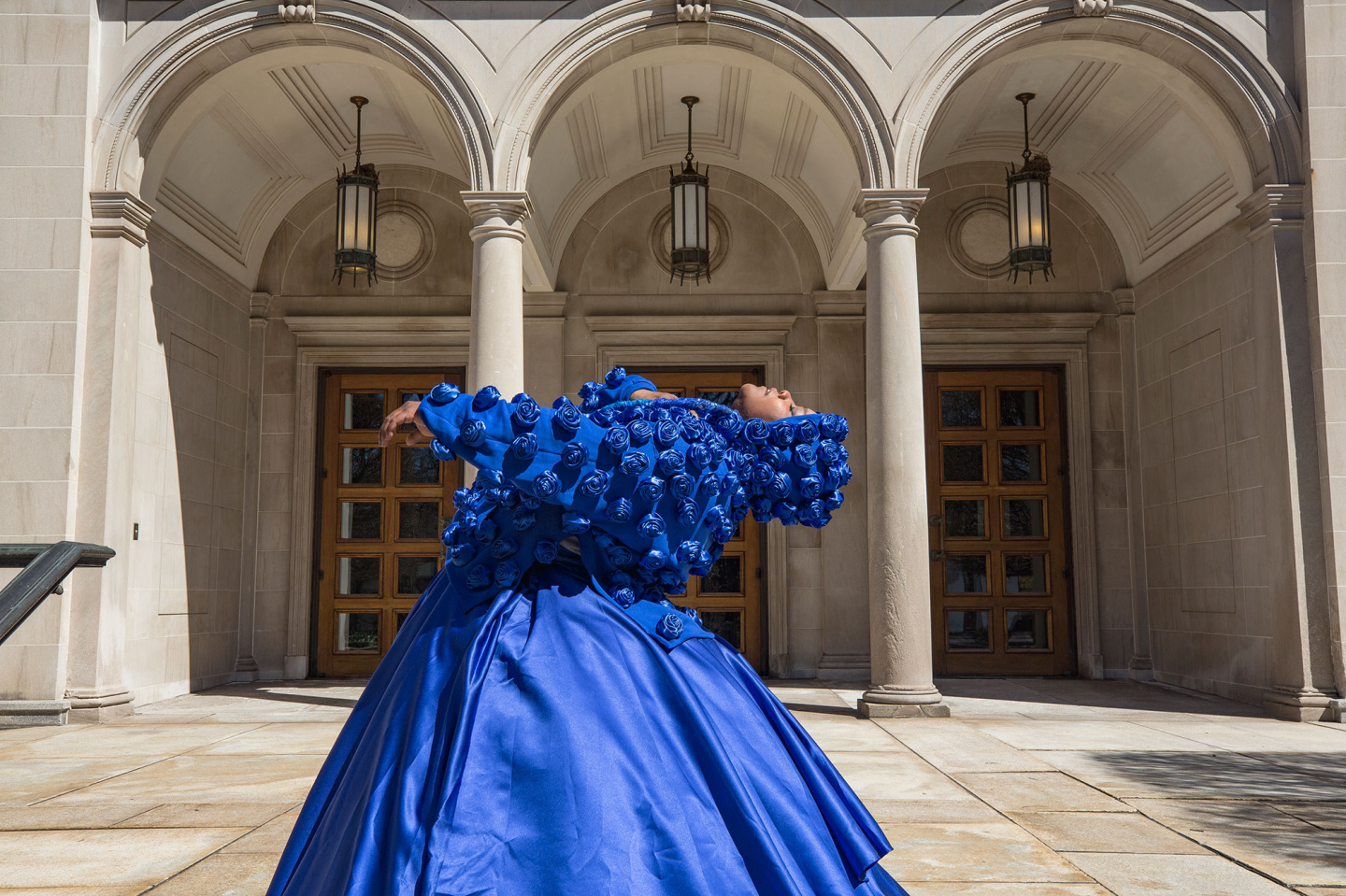In one of her poems, artist vanessa german writes, “I come to do a violence to the lie.” The lie, which german seeks to destroy with her sculptures, performances and community activism, is the perceived separation of people, places, and things. This is evidenced by projects such as “Love Front Porch,” where she paints and sculpts on her home’s porch and invites neighborhood kids to find refuge there. So, this poetic “violence” is in fact a generous reminder of what we might call the law of oneness: a primordial truth that all living entities, seen or unseen, are intrinsically connected.
In allowing the unnamable dimensions of being, such as ancestral wisdom, to guide her, german’s work rescues our collective psyche from the white supremacist myth that we, as humans, can separate and control the happenings of our everyday lives. In particular, german’s “power figures,” sculptures of beings whose bodies are composed of a variety of found objects, point at the artist’s capacity to move through the world as an instrument of social healing.
Crediting her practice for restoring her will to live, german began making artwork as a recuperative action after leaving a terrible job. Over a six-month period, she took her dog out on long strolls, carrying bags with her to collect objects found along the way. Further reflecting on the meditative nature of this time, german says, “My mind changes when I’m looking for stuff. Things open up in a way and I’m always looking for things that I’ve never seen before, which invites another open door.” She describes these moments of gathering as an “incremental turning-up of the volume of something inside of myself,” which helped her resensitize her body and open it to feeling again. “Finding a certain thing on the ground let me know that life was possible,” she says.
After accumulating a sizable volume of wood from her walks, she began stacking it in her basement until she arrived at a composition that, as she puts it, “felt so right.” She then asked herself what about it electrified her, and spent time listening for answers. This sort of spiritual inquiry made her feel excited to wake up in the morning again, recalling the infinite wisdom of Audre Lorde, whose essay “Uses of the Erotic: The Erotic as Power” reminds us that our sense of what “feels right” is a key ingredient in building a habitable life. To this end, german muses, “The magic of stacking wood—that’s how I found a place to be.”






From here, the artist brought additional degrees of complexity to her “power figures” by adorning them with other objects she found on her strolls, including shards of glass, bottles, charms, fabric, shells and mirrors. While these figures assume shapes that resemble the human form, they are not meant to represent specific individuals. Rather, german is interested in crafting an energetic impulse that affects the viewer, even if their particular meanings or purposes cannot be discerned. In the past, german has remarked that these figures are meant to serve as protectors of Black people against violence, and as celebrations of freedom and unbridled creativity.
When we spoke, german noted that despite there being a void of human guidance in her life, to teach her she could “shape a life that I can live inside of by my own rules,” she intuitively knew from a young age that aliveness is a sacred experience, one to be molded and honored at one’s own volition. Considering german’s development—like everyone’s—was largely shaped by the material and ideological aftermath of the transatlantic slave trade, which seduces Black women into forgetting our sanctity and autonomy, her dual commitments to “working through the objects and materials I have” and to “always give myself the best options,” become all the more salient.
For the artist, the “power figures” exist as “active technologies of the soul that touch the vast history that exists in the spiral of our DNA.” german’s sculptures do not demand that we “figure them out” and, instead, beckon us towards a reversal of the belief that everything exists to be known or understood. In their presence, we are encouraged to remove the intellectual burden of defining connections, and to accept that there are things which lie beyond our capacity to name, define and categorize. Ultimately, german’s work reminds us to be diligent students of the nonphysical realm, a space that can be deeply felt, but not necessarily articulated or pinned down.










 in your life?
in your life?

